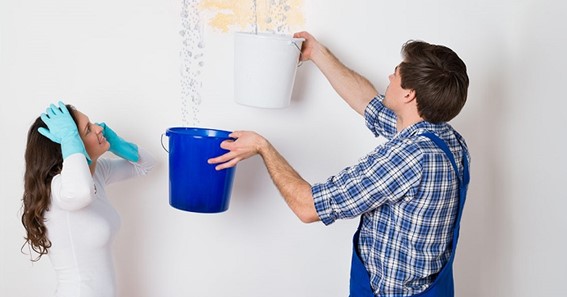Commercial water damage restoration is a professional level of restoration, requiring experienced and trained technicians to effectively restore water-damaged walls, ceilings, and fixtures. That is why it is important that one treat their water damage as soon as possible by following any given methods. If not, the extent of damage can cause structural damage as well. This damage mainly occurs through improper drying of the building.
The interior properties of the property will be affected as well if the water damage is not fixed in time. Let us take a look at some of the procedures in doing commercial water damage repair and restoration. It’s known that a simple leak can lead to widespread moisture causing black mold that is a predisposing factor to some fungal and bacterial causing illnesses.
Preventive Measures
Depending on the extent of the water damage, one can use these methods to restore their building to its original condition. The preventive measures should be taken first to avoid further damages from happening which include:
- Make sure that the water supply is completely turned off. If unsure of how to do it, contact the property managers to handle this.
- Have the source of water damage fixed immediately or hire a professional plumber to fix it. If the source of water comes from a plumbing fixture, contact a plumbing company that can help with a fast response time so that they can fix the problem as soon as possible.
- Additionally, contact a company that offers emergency services, sometimes emergency companies, such as the fire department, can provide emergency services and water damage restoration in a short period of time.
click here – Avoid Harsh Sanctions by Letting a Defense Lawyer Advise You in School Disciplinary Proceedings
Tips to Repair Water Damaged in Walls and Ceilings
These are the following steps that one needs to take to repair damaged walls and ceilings through water damage:
Step 1:
Make sure that all electrical fixtures and appliances are unplugged before proceeding with the cleaning, repair, and restoration process.
Step 2:
With the help of a putty knife, remove any excess wet materials from wall areas. While doing this try not to scratch or gouge the wall. Use a water hose and place it against the ceiling or walls to remove as much water as possible, a wet/dry vacuum can also be used efficiently.
Step 3:
Remove any wet drywall from the walls and ceilings. Clean them with damp towels as well as any grout from the ceilings, walls, and also from floor joints.
Step 4:
Vacuum up all remaining water, use a wet/dry vacuum if possible. Place plastic sheeting over the broken areas to prevent further water damage.
Step 5:
Dry out the building with fans or with air movers installed in the building, then continue with any of the following methods of repair or restoration.
Step 6:
Prime and paint any areas that may have water damage on them.
Step 7:
Completely clean and dry down the wall and ceiling surfaces, the best method of restoration is to use a concrete sealer for all the repaired areas. These types of sealers are naturally waterproof and non-toxic. It can be used in most types of paints so it is recommended as a first choice to seal all surfaces of the building, afterward choose the color schemes as well.
click here – Why Should You Use a Hair Mask for Hair Growth?
What one needs to check to prevent this from happening again
If there are any signs of water damage in a building, here are some things that one should check out and do to prevent this from happening again. Check the following inside and outside the building:
- Check for any signs of wet carpet or drying wet carpets. This is a sign that plumbing may have been leaking, call a professional to fix it as soon as possible.
- Check for mildew around the baseboards and caulking in the walls and ceilings (this is also a sign of water damage).
- Check the roofs and gutters if they are leaking from any broken parts, if so, have them repaired immediately.
- Inspect the water supply valves and make sure that they are not leaking. Have a backup water source for the building in case the main source is cut off.
- Ensure the drains and sewer system are working properly even if it does not seem like it. Professionals should do this as well to avoid further clogging of the drains and sewers.
Conclusion
Commercial water damage restoration is a process that needs to be done as quickly as possible. Take into account the point mentioned above black mold which is a condition that can cause serious health issues, so it is important that one take preventative measures during the water damage repairs. Treat the water damage right away or risk further damage to a building and its structure.

